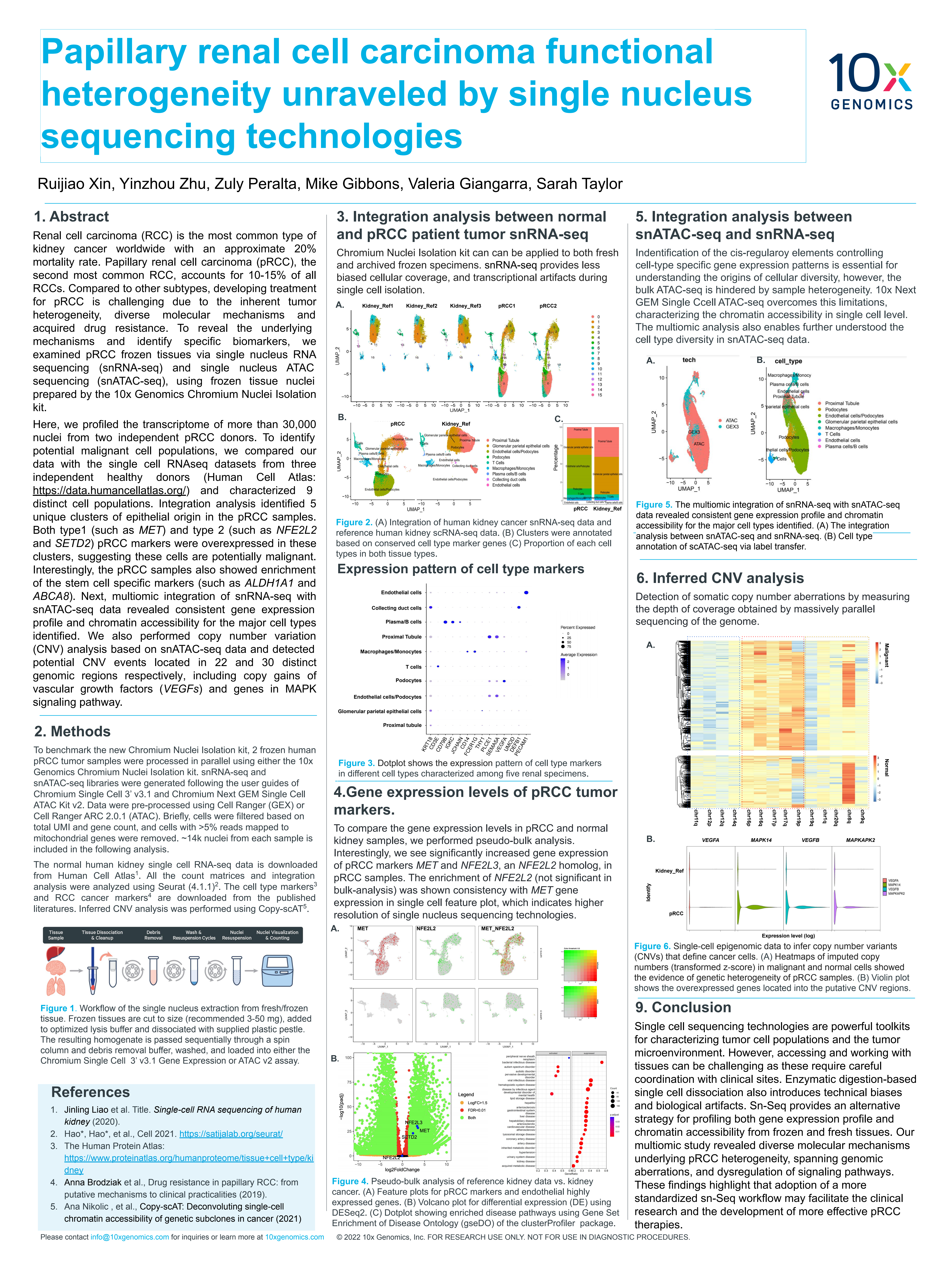
Papillary renal cell carcinoma functional heterogeneity unraveled by single nucleus sequencing technologies
Renal cell carcinoma (RCC) is the most common type of kidney cancer worldwide with an approximate 20% mortality rate. Papillary renal cell carcinoma (pRCC), the second most common RCC, accounts for 10-15% of all RCCs. Compared to other subtypes, developing treatment for pRCC is challenging due to the inherent tumor heterogeneity, diverse molecular mechanisms, and acquired drug resistance. To reveal the underlying mechanisms and identify specific biomarkers, we examined pRCC frozen tissues via single nucleus RNA sequencing (snRNA-seq) and single nucleus ATAC sequencing (snATAC-seq), using frozen tissue nuclei prepared by the 10x Genomics Chromium Nuclei Isolation kit.
Renal cell carcinoma (RCC) is the most common type of kidney cancer worldwide with an approximate 20% mortality rate. Papillary renal cell carcinoma (pRCC), the second most common RCC, accounts for 10-15% of all RCCs. Compared to other subtypes, developing treatment for pRCC is challenging due to the inherent tumor heterogeneity, diverse molecular mechanisms, and acquired drug resistance. To reveal the underlying mechanisms and identify specific biomarkers, we examined pRCC frozen tissues via single nucleus RNA sequencing (snRNA-seq) and single nucleus ATAC sequencing (snATAC-seq), using frozen tissue nuclei prepared by the 10x Genomics Chromium Nuclei Isolation kit.